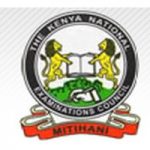A month before cardiac arrest,your body will warn you.Here we provide details of the disease’s symptoms and how to respond so as to avoid deaths.
Sudden Cardiac Arrest (SCA)
> Sudden cardiac arrest (SCA) is a condition in which the heart suddenly and unexpectedly stops beating. When this happens, blood stops flowing to the brain and other vital organs.
> Sudden cardiac arrest usually causes death if it’s not treated within minutes.
Overview
√ To understand sudden cardiac arrest, it helps to understand how the heart works. The heart has an internal electrical system that controls the rate and rhythm of the heartbeat.
√ Problems with the electrical system can cause abnormal heart rhythms called arrhythmias (ah-RITH-me-ahs).
√ There are many types of arrhythmias. During an arrhythmia, the heart can beat too fast, too slow, or with an irregular rhythm. Some arrhythmias can cause the heart to stop pumping blood to the body. These are the type of arrhythmias that cause sudden cardiac arrest.
√ Sudden cardiac arrest is not the same as a heart attack. A heart attack occurs when blood flow to part of the heart muscle is blocked.
√ During a heart attack, the heart usually doesn’t suddenly stop beating. Sudden cardiac arrest, however, may happen after or during recovery from a heart attack.
√ People who have heart disease are at increased risk for sudden cardiac arrest. However, most sudden cardiac arrests happen in people who appear healthy and have no known heart disease or other risk factors for sudden cardiac arrest.
Outlook
> Ninety-five percent of people who have sudden cardiac arrest die from it —most within minutes. Rapid treatment of sudden cardiac arrest with a defibrillator can be lifesaving. A defibrillator is a device that sends an electric shock to the heart to try to restore its normal rhythm.
> Automated external defibrillators (AEDs), which often are found in public places like airports and office buildings, can be used by bystanders to save the lives of people who are having sudden cardiac arrest.
Causes of SCA
> Most cases of sudden cardiac arrest (SCA) are due to ventricular fibrillation v-fib). V-fib is a type of arrhythmia. In v-fib, the ventricles (the heart’s lower chambers) don’t beat normally. Instead, they quiver very rapidly and irregularly.
> When this happens, the heart pumps little or no blood to the body. V-fib is fatal if not treated within a few minutes.
> Other electrical problems in the heart also can cause sudden cardiac arrest. For example, sudden cardiac arrest can occur if the rate of the heart’s electrical signals becomes very slow and stops. Sudden cardiac arrest also can occur if the heart muscle doesn’t respond to the heart’s electrical signals.
> Several factors can cause the electrical problems that lead to sudden cardiac arrest. These factors include:
√ Coronary artery disease (CAD), which reduces blood flow to the heart muscle
√ Severe physical stress, which raises the risk for abnormal electrical activity in the heart
√ Inherited disorders that disrupt the heart’s electrical activity
√ Structural changes in the heart that cause electrical signals to spread abnormally
> Several research studies are under way to try to find the exact causes of sudden cardiac arrest and how to prevent them.
Coronary Artery Disease
> CAD occurs when a fatty material called plaque (plak) builds up in the coronary arteries. These arteries supply your heart muscle with oxygen-rich blood.
> Plaque narrows the arteries and reduces blood flow to your heart muscle. Eventually, an area of plaque can rupture, causing a blood clot to form on the surface of the plaque.
> A blood clot can mostly or completely block the flow of oxygen-rich blood to the part of the heart muscle fed by the artery. This causes a heart attack.
> During a heart attack, some heart cells die and are replaced by scar tissue. This damages the heart’s electrical system. The scar tissue may cause electrical signals to spread abnormally throughout the heart. These changes increase the risk for dangerous ventricular arrhythmias and sudden cardiac arrest.
> CAD seems to be the cause of most cases of sudden cardiac arrest in adults. Many of these adults, however, have no signs or symptoms of CAD before having sudden cardiac arrest.
Physical Stress
> Certain types of physical stress can cause the heart’s electrical system to fail. Examples include:
@ Intense physical activity. The hormone adrenaline is released during intense physical activity. This hormone can trigger sudden cardiac arrest in people who have other heart problems.
@ Very low blood levels of potassium or magnesium. These minerals play an important role in your heart’s electrical signaling.
@ Major blood loss.
@ Severe lack of oxygen.
@ Inherited Disorders. A tendency to have arrhythmias runs in some families. This tendency is inherited, which means it’s passed from parents to children. Members of these families may be at increased risk for sudden cardiac arrest.
© An example of an inherited disorder that makes you more likely to have arrhythmias is long QT syndrome(LQTS). LQTS is a disorder of the heart’s electrical activity due to problems with tiny pores on the surface of heart muscle cells. LQTS can cause sudden, uncontrollable, dangerous heart rhythms.
√ People who inherit structural heart problems also may be at increased risk for sudden cardiac arrest. Many cases of sudden cardiac arrest in children are due to these problems.
@ Structural Changes in the Heart. Changes in the heart’s normal size or structure may affect its electrical system. Examples of such changes include an enlarged heart due to high blood pressure or advanced heart disease.
Heart infections also may cause structural changes in the heart.
Risk for Sudden Cardiac Arrest
> Sudden cardiac arrest occurs most often in people in their mid-thirties to mid-forties. It appears to affect men twice as often as women.
> Sudden cardiac arrest rarely occurs in children unless they have inherited problems that make them likely to have sudden cardiac arrest. Only a very small number of children have sudden cardiac arrest each year.
Major Risk Factors
> The major risk factor for sudden cardiac arrest is undiagnosed coronary artery disease (CAD). Most people who have sudden cardiac arrest are later found to have some degree of CAD. Most of these people don’t know that they have CAD until sudden cardiac arrest occurs.
Other Risk Factors
> Other risk factors for sudden cardiac arrest include:
@ A personal or family history of sudden cardiac arrest or of inherited disorders that make you prone to arrhythmias
@ A history of having arrhythmias
@ Heart attack
@ Heart failure
@ Drug abuse or excessive alcohol intake.
Signs and Symptoms of SCA
> Usually, the first sign of sudden cardiac arrest (SCA) is loss of consciousness (fainting). At the same time, no heartbeat (or pulse) can be felt.
> Some people may have a racing heartbeat or feel dizzy or lightheaded just before they faint.
> Within an hour before sudden cardiac arrest, some people have chest pain, shortness of breath, nausea (feeling sick to the stomach), or vomiting.
SCA Diagnosis
> Sudden cardiac arrest (SCA) happens without warning. It requires immediate emergency treatment. Doctors rarely can diagnose sudden cardiac arrest with medical tests as it’s happening.
> Instead, sudden cardiac arrest often is diagnosed after it happens. Doctors do this by ruling out other causes of a person’s sudden collapse.
Diagnostic Tests and Procedures
> Doctors use several tests to help detect the factors that put people at risk for sudden cardiac arrest.
√ EKG (Electrocardiogram):
> An EKG is a simple, painless test that records the heart’s electrical activity. This test is used to detect and locate the source of several heart problems.
√ Echocardiography:
> Echocardiography (EK-o-kar-de-OG-ra-fee) is a painless test that uses sound waves to create pictures of your heart. It provides your doctor with information about the size and shape of your heart and how well your heart’s chambers and valves are working.
√ MUGA Test or Cardiac Magnetic Resonance Imaging:
> A MUGA test shows how well your heart is pumping blood. For this test, a small amount of radioactive substance is injected into a vein and travels to your heart. The substance releases energy, which special cameras outside of your body detect. The cameras use the energy to create pictures of different parts of your heart.
√ Cardiac Catheterization:
> Cardiac catheterization is a procedure used to diagnose and treat certain heart conditions. A long, thin, flexible tube called a catheter is put into a blood vessel in your arm, groin (upper thigh), or neck and threaded to your heart.
Through the catheter, your doctor can do diagnostic tests and treatments on your heart.
Sometimes a special dye is put into the catheter to make the inside of your heart and blood vessels show up on x rays. The dye can show whether plaque has narrowed or blocked any of your coronary arteries.
√ Electrophysiology Study:
> For an electrophysiology study, doctors use cardiac catheterization to record how your heart’s electrical system responds to certain medicines and electrical stimulation. This helps your doctor find where the heart’s electrical system is damaged.
Blood Tests
> You may have blood tests to check the levels of potassium, magnesium, and other chemicals in your blood that play an important role in your heart’s electrical signaling.
SCA Treatment
> Sudden cardiac arrest (SCA) requires immediate treatment with a defibrillator.
This device sends an electric shock to the heart. The electric shock may restore a normal rhythm to a heart that’s stopped beating.
> Cardiopulmonary resuscitation (CPR ) should be given to a person having sudden cardiac arrest until defibrillation can be done.
> People who are at risk for sudden cardiac arrest may want to consider having an AED at home. Currently, one AED, the Phillips HeartStart Home Defibrillator, is sold over-the-counter for home use.
Treatment in a Hospital
> If you survive sudden cardiac arrest, you usually will be admitted to a hospital for observation and treatment. In the hospital, your medical team will closely watch your heart.
√ Often, people who have sudden cardiac arrest get a device called an implantable cardioverter defibrillator (ICD). This small device is surgically placed under the skin in your chest or abdomen. An ICD uses electric pulses or shocks to help control dangerous arrhythmias.
SCA Prevention
> Ways to prevent death due to sudden cardiac arrest (SCA) differ depending on whether:
@ You’ve already had sudden cardiac arrest
@ You’ve never had sudden cardiac arrest but are at high risk for the condition
@ You’ve never had sudden cardiac arrest and have no known risk factors for the condition
For People Who Have Survived Sudden Cardiac Arrest
@ If you’ve already had sudden cardiac arrest, you’re at high risk of having it again. Research shows that an implantable cardioverter defibrillator (ICD) reduces the chances of dying from a second sudden cardiac arrest.
√ An ICD isn’t the same as a pacemaker. The devices are similar, but have some differences. Pacemakers only give off low-energy electrical pulses. They’re often used to treat less dangerous heart rhythms, such as those that occur in the upper chambers of the heart. Most new ICDs work as both pacemakers and ICDs.
For People at High Risk for a First Sudden Cardiac Arrest
√ Healthy Diet and Physical Activity
© A healthy diet is an important part of a heart healthy lifestyle. Choose a variety of fruits, vegetables, and grains; half of your grains should come from whole-grain products.
© Choose foods that are low in saturated fat, trans fat, and cholesterol. Healthy choices include lean meats, poultry without skin, fish, beans, and fat-free or low-fat milk and milk products.
© Choose and prepare foods with little sodium (salt). Too much salt can raise your risk for high blood pressure. Recent studies show that following the Dietary Approaches to Stop
Hypertension (DASH) eating plan can lower blood pressure.
© Choose foods and beverages that are low in added sugar. If you drink alcoholic beverages, do so in moderation.
© Aim for a healthy weight by staying within your daily calorie needs. Balance the calories you take in with the calories you use while doing physical activity. Be as physically active as you can.
Other Lifestyle Changes
> Other lifestyle changes also can help lower your risk for sudden cardiac arrest.
Examples include:
* Quitting smoking. Talk to your doctor about programs and products that can help you quit. Also, try to avoid secondhand smoke .
* Losing weight if you’re overweight or obese.
* Treating other health problems, such as high blood pressure, high blood cholesterol, and
diabetes.















